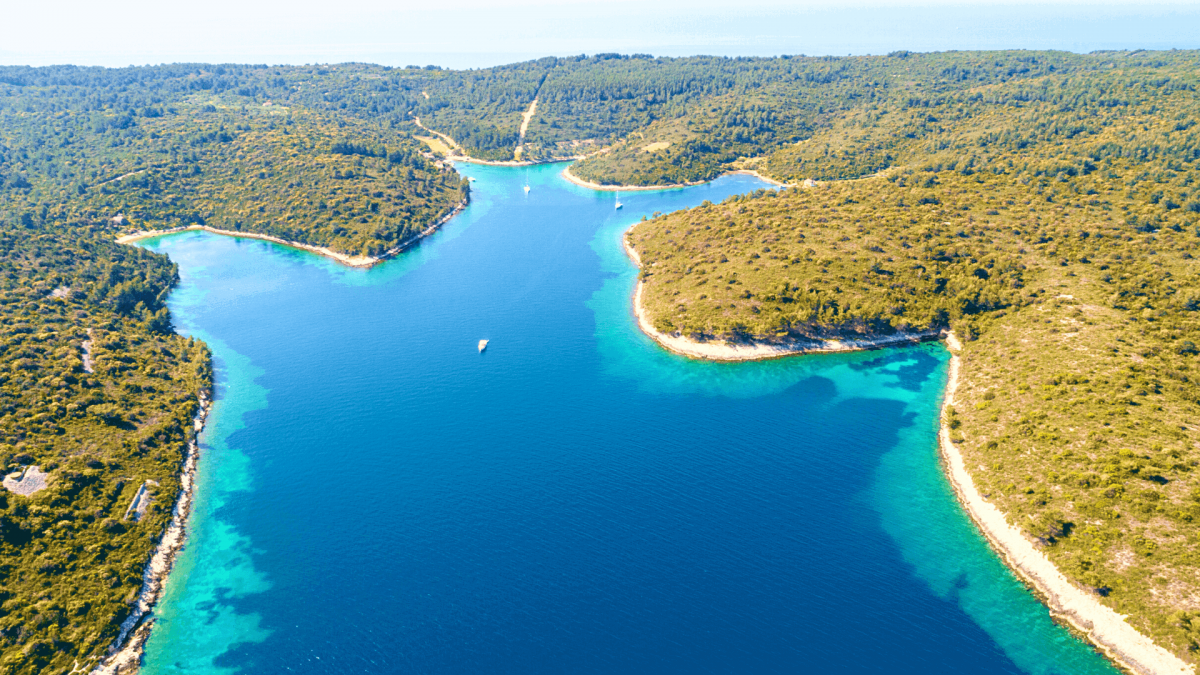
Located in the Korčula Channel about 3 km in front of Hvar’s southern coast is the island of Šćedro, a Dalmatian jewel covering 8.4 km². Rather impossible to pronounce for non-native Croatian speakers, the name ‘Šćedro’ is said to derive from ‘štedri’ in the old Slavonic language, meaning charitable or generous. But why, might you ask?
Well, it is adorned with well-protected coves! Historical records, however, state that the Latin name of Šćedro was Tauris from the Italian Tauricola or Torcola.
This small and largely uninhabited island is home to just 30 people during the summer months and 15 in the winter, which is likely due to the fact that there is no electricity or running water on the island. Its main ancient settlements - Mostir and Nastane, are mostly abandoned, bar some content for tourists in the form of restaurants and facilities.
Built of Cretaceous limestone, Šćedro’s highest peak Vela Glava, measuring 112 meters and the island itself is protected as a nature reserve. Due to that, the construction of holiday houses is prohibited on Šćedro, and you’ll be hard-pressed to find something as simple as a supermarket! While it lacks in amenities, it wows as one of the most tranquil Adriatic islands. British author Charles Arnold can attest to that as he called Šćedro the ‘most peaceful of them all’ in The Mediterranean Islands handbook, which rated 200 Mediterranean islands!
History
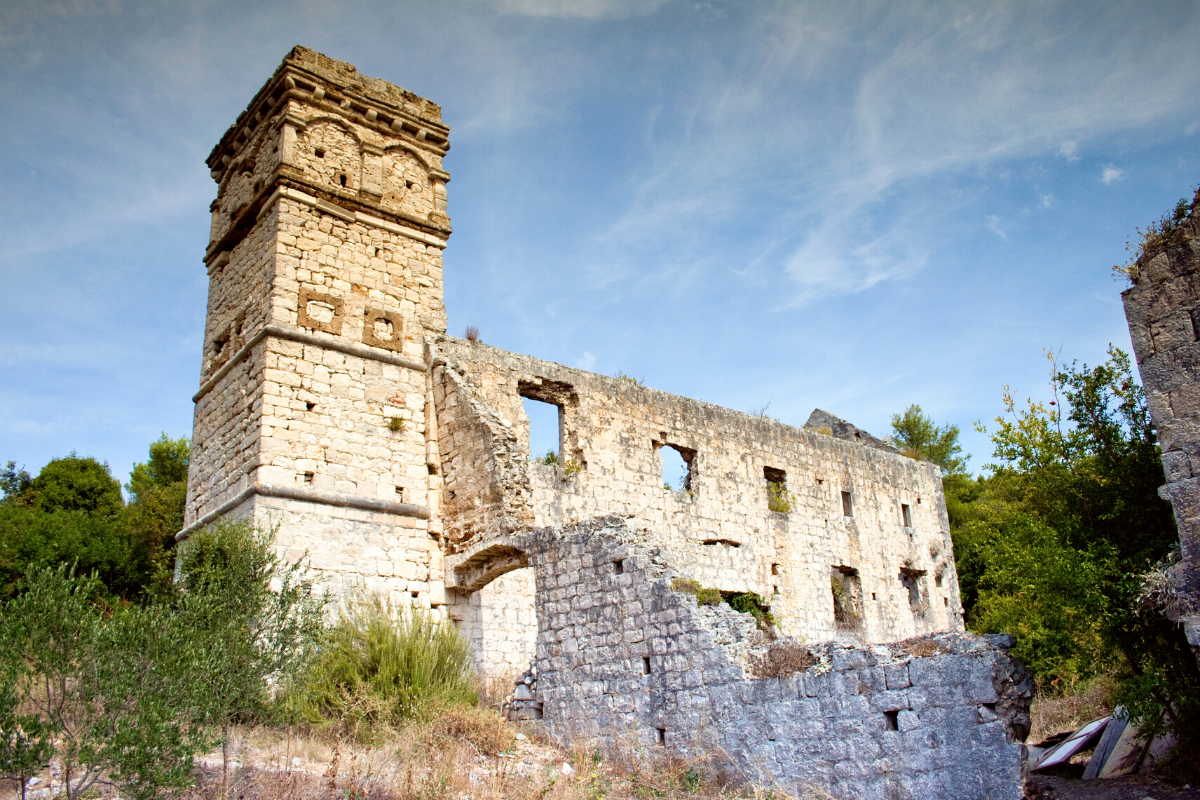
While there may not be much written about Šćedro’s history, we can recall a few imperative periods in Šćedro’s lifetime. It’s interesting enough to recount that Šćedro’s existence dates back to prehistory thanks to preserved mounds discovered on the island! There are 62 ancient stone mounds around the island today.
It’s also interesting to note that the epic battle for the Adriatic between Pompeius and Caesar in 49 BC allegedly happened in the waters of Šćedro, which is confirmed by numerous discoveries found in the depths of the sea.
We do know for certain, however, that Šćedro’s fertile and wetter climate than its Hvar counterpart welcomed the cultivation of grain. Šćedro was thus named a communal property and used as a pasture according to the Hvar Statute of 1331.
A Dominican monastery was founded in Mostir Bay in 1465, including a hospice for sailors that was abandoned in the 18th century due to the threat of pirates. Furthermore, the remains of Roman Villa Maritima, ranging from the 1st to the 3rd century, were discovered in Rake Bay, with many fragments of pottery dating from Roman times to modern times found in the sea bottom.
A Roman ship dating back to the end of the 2nd or beginning of the 1st century BC was discovered 40 meters off the north coast of Šćedro, with over 150 preserved amphorae observed and protected in a metal cage.
And in more recent history, the wing of a World War II airplane was discovered on the south side of the island!
Where to anchor
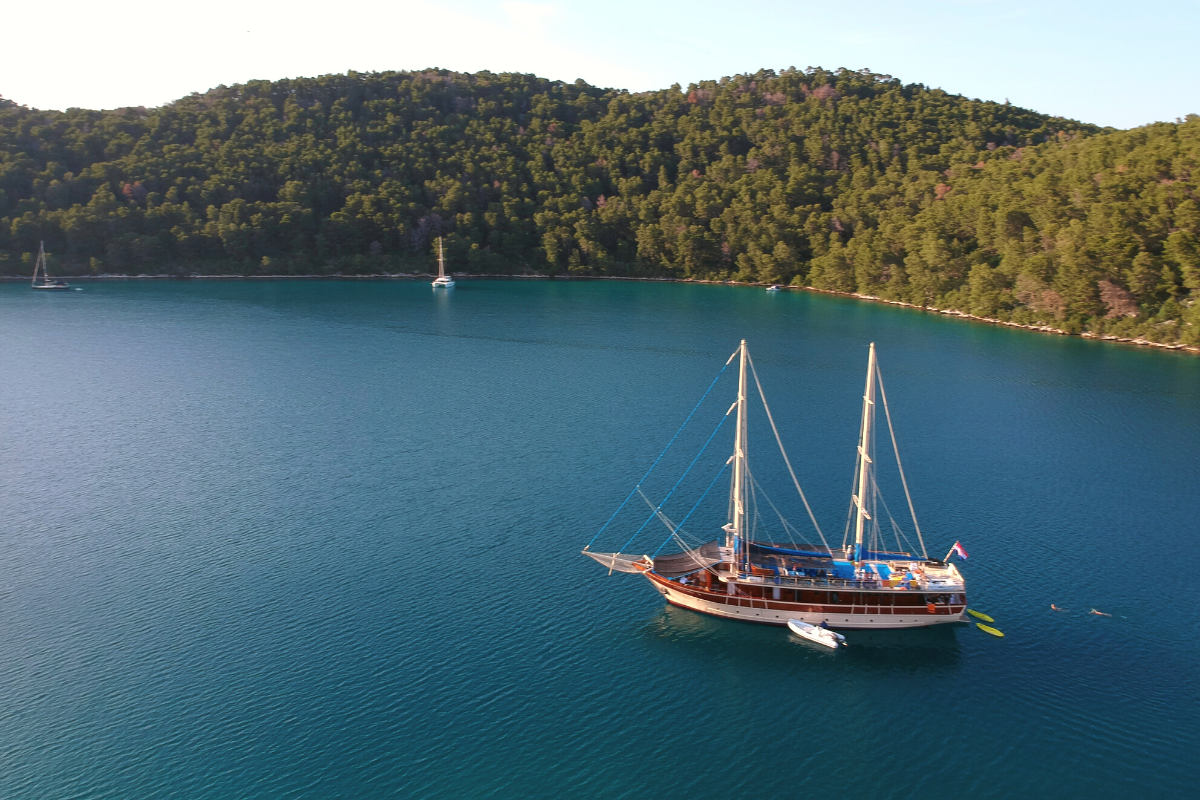
Šćedro’s coves have been known for their safe anchorages and harbors since Ancient times, most notably thanks to Lovišće, Mostir, Čarnjeni bok (or Porteruša), and Borova bays.
Lovišće and Manastir are located on the northern side of the island, with protection against most Adriatic winds apart from the infamous bura. Boaters visiting these two bays can enjoy the handful of restaurants on the island that also offer moorings for diners. And should you opt to take the dinghy to eat instead, boaters can drop anchor in the bays with depths from 5-10 meters depending on where you are.
Borova and Čarnjeni are located on the southeast side of the island and offer protection from maestral and tramontana winds. Borova owes its name to the dense pine forest that encompasses it, while Čarnjeni offers a pebbled beach and truly spectacular natural surroundings.
Where to eat and drink
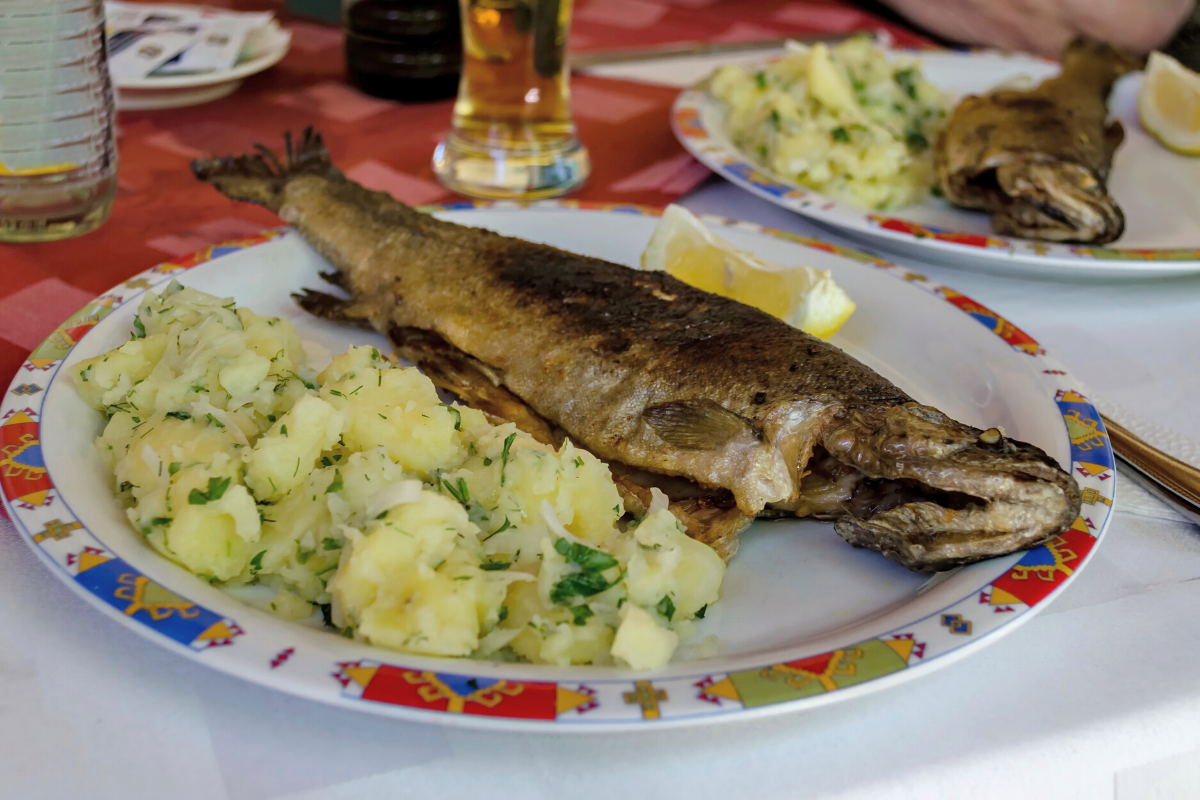
As we’ve mentioned, there aren’t many dining options on the island, but we are certain that the homestyle cooking and tavern-style ambience make up for any missing eateries.
Konoba Mostir
Located in a bay of the same name and around the corner from the remains of a 15th-century Dominican monastery, Konoba Mostir is a quaint tavern restaurant with a seafood-focused menu and produce sourced from their garden. Operated by the Kordić family, Mostir honors the catch of the day, paired with homemade table wines to complete this rustic Dalmatian dining experience.
Kod Ive
Located in Veli Porat Bay, Kod Ive is run by the Jakas family, serving up seafood specialities ranging from quality fish to lobster and langoustines chosen by guests directly from the aquarium. Meat eaters can choose from a large selection of dishes, while local wines amplify the terrace setting.
Rato’s Grill
In Lovišce bay is Rato, a family-run restaurant serving simple fare made special thanks to freshly-caught fish, homegrown vegetables and herbs, and homemade olive oil and wine. Powered by solar panels and a generator, Rato’s chefs often ask diners to enter the kitchen so they can choose the fish and meat used for their meals!
Best swimming spots
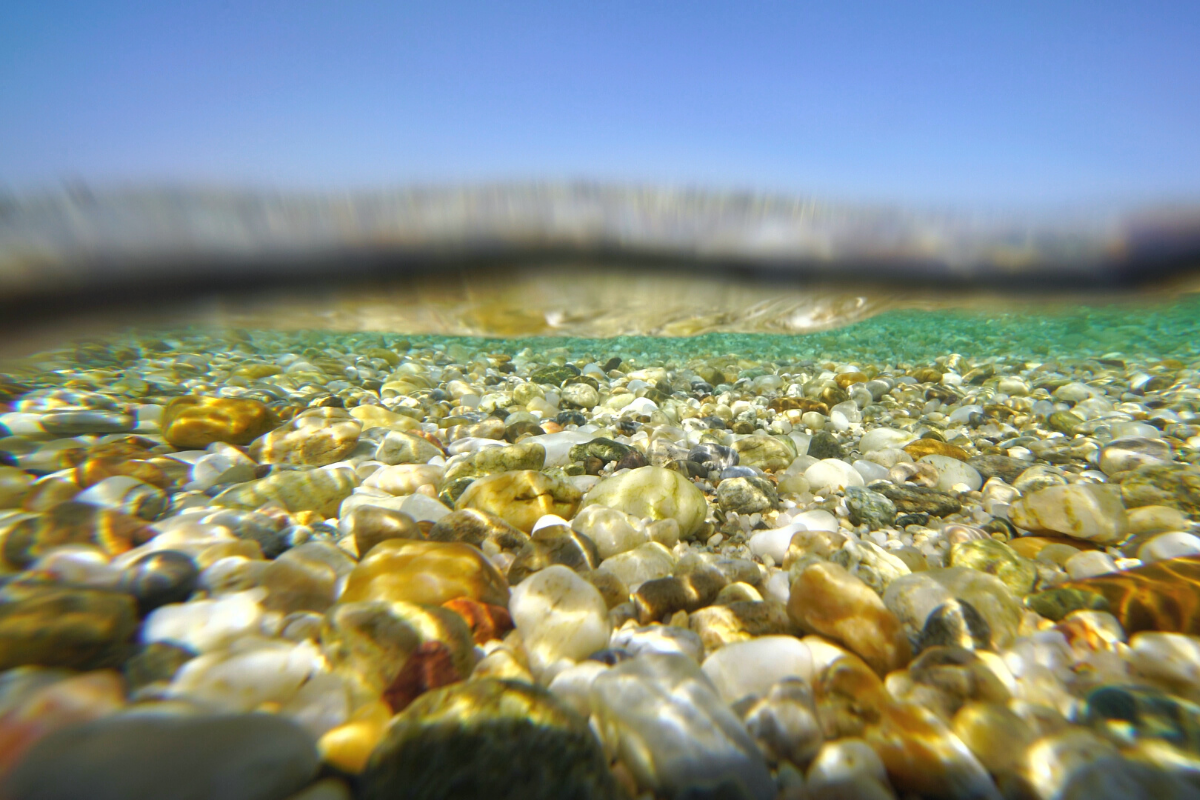
Šćedro island is a playground of stunning swimming spots thanks to its well-protected coves and bays. Most popular on the island are Srida, Karkavac, and Lovišće which boast clean swimming waters and access to the few restaurants on the island. They are also well-protected from the southern ‘jugo’ wind.
The pebbled Porteruša beach is set in wild nature for an unparalleled swimming experience on the island, Tufera bay is a favorite among yachters, and Uvala Nova Posta is a secluded pebble beach without any amenities!
Activities
Hiking is popular on the island thanks to footpaths that connect the island’s most unique locations.
One of the most popular hikes is to the remains of the 15th century Dominican monastery, first mentioned in medieval documents dating to 1460, or to the old settlement of Nastane. More ambitious hikers, however, may choose the tackle Vela Glava, the highest point of Šćedro, where you can find the largest ancient mound identified on the island so far.
It is important to note that the island is cared for thanks to the Šćedro Friends Association, which cleans and removes rubbish from the island, while also maintaining the fire paths throughout the year.
